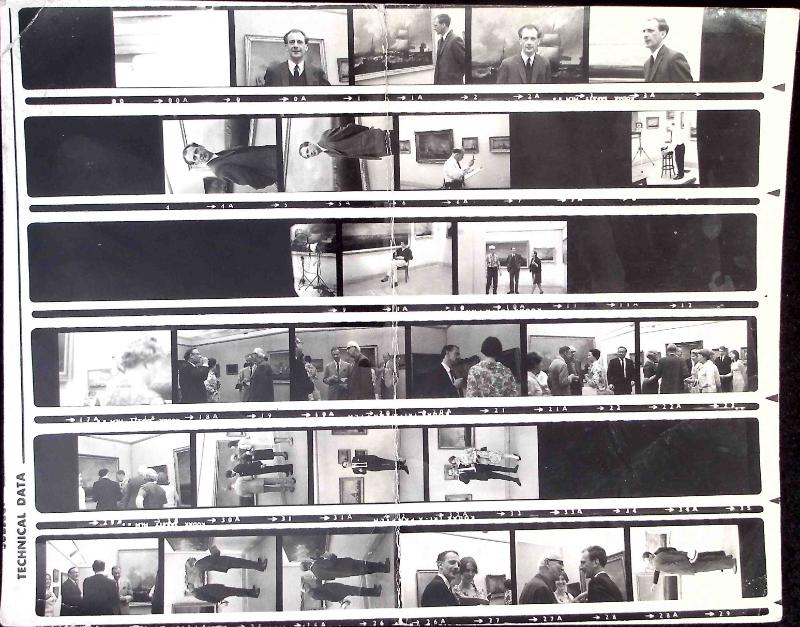PMC Photography
Staff Photographers
Original photography provided the key means by which the Centre acquired images for the Photographic Archive. In 1964, the Centre appointed a photographer—Douglas Smith—whose role was initially twofold. First, he was tasked with capturing works that might potentially disappear from view, or of which there were few if any reproductions elsewhere. To this end he was engaged in photographing works in temporary exhibitions, passing through salerooms, and in private collections across the UK.

Fig. 1
Contact sheet of Photographic Archive negatives. Paul Mellon Centre Institutional Archive
Second, Smith also worked with scholars in the field, photographing works for research projects and for publications—both those commissioned directly by the Foundation and otherwise. At this time, obtaining high-quality images of works of art was often prohibitively expensive, and so such photographic assistance was invaluable. The Foundation called this type of support “grant-in-kind”. In each case, a copy of the image was given to the scholar and a copy retained for the Centre’s Photographic Archive. Smith—and a second photographer, James Read, hired by the Centre in 1972—worked on an impressive range and volume of projects.
Latterly, Smith and Read also worked on longer-term programmes inaugurated by the Centre, such as the systematic photography of English Prints. The ultimate aim of this ambitious initiative, as recorded in the Annual Report of 1975–1976, was to “assemble a complete photographic record of the subject, in the same way that the Warburg has been doing for Italian prints”.1 Prints of all PMC negatives were also made available to various institutions, including the newly established Yale Center for British Art. By the late 1980s original photography at the Centre was diminishing. A significant change occurred in 1988 when the decision was made to stop photographing works passing through salerooms. If the auction house could not supply prints directly, images were cut straight from the catalogues themselves, which were now much better illustrated than previously.2 By the 1990s, most of Smith’s work was focused on supporting the Centre’s expanding publishing activities. When he finally retired from the Centre in 1996, he and Read had travelled the length and breadth of the country producing, between them, in excess of 40,000 images—over a third of the entire content of the Centre’s Photographic Archive.